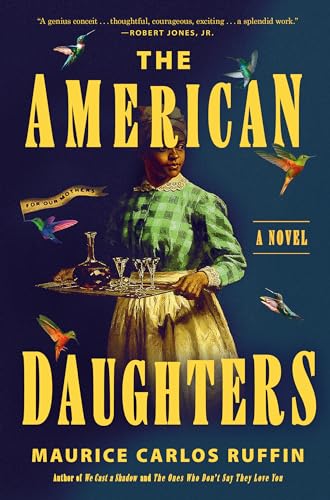The American Daughters
Enslaved on John du Marche’s plantation in the years before the Civil War, Ady and her mother, Sanite, survive inhumane treatment through strength of spirit and fierce devotion to each other. When they manage to escape, Sanite teaches her young daughter to survive in the woods and to kill, if necessary. The two are captured, returned to bondage, then separated for good, and Ady is transferred to du Marche’s townhouse in New Orleans, a city that becomes her “open-air penitentiary.” On one of her errands for the household, she stumbles upon the Mockingbird Inn, run by a free woman of color named Lenore.
The Mockingbird turns out to be a cover for a network of spies called The Daughters—Black women, many enslaved, who work behind the scenes to gather information for abolitionist forces and, after war erupts, the Union. The women employ the code phrase “for our mothers” to reveal themselves to each other. When du Marche, now a high-ranking rebel officer, learns about the subterfuge, he seeks revenge against Ady with a plan to separate her from Lenore forever. In return, Ady and Lenore plot to crush him—and Confederate power—in the city.
Ruffin’s novel is both harrowing and thrilling, set against a vibrant New Orleans and teeming with memorable characters. Ady and Lenore’s burgeoning love story serves as a backdrop to the intense action scenes. Woven throughout the narrative are documents from Ady’s ancestors, ending with an epilogue dated 2172 that imagines which parts of a novel called The American Daughters—based on Ady’s journal—are factual. The conclusion reminds us how far the country still has to travel to reckon with the stain of slavery’s history.










